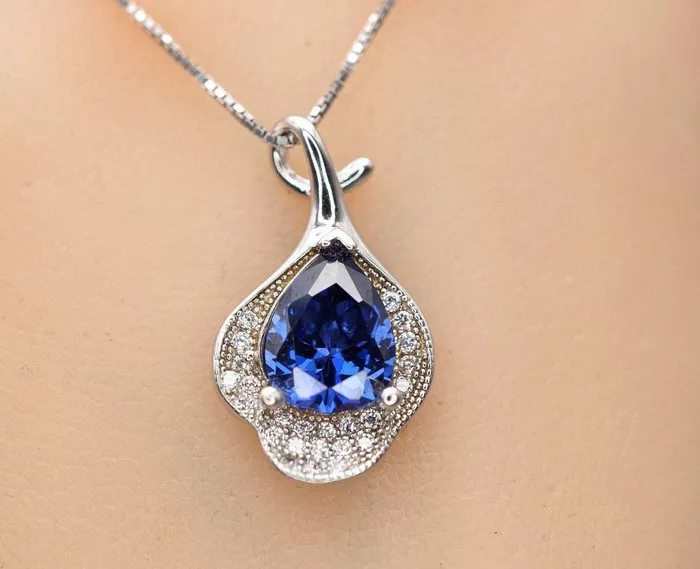Diamonds have long captured human fascination with their dazzling brilliance and timeless allure. Among the many qualities that define a diamond’s beauty, its ability to shine with a spectrum of colors, including blue, has sparked curiosity and speculation. In this article, we delve into the phenomenon of blue-shining diamonds, separating fact from fiction, and explore the intricacies of diamond color, shine, and value.
Explanation of Diamond Fluorescence
One of the captivating features of certain diamonds is their tendency to emit a blue glow when exposed to ultraviolet (UV) light. This phenomenon, known as fluorescence, occurs when the diamond’s atomic structure interacts with UV radiation, causing it to emit visible light in various colors, with blue being the most common. Approximately one-third of diamonds exhibit some degree of fluorescence, although the intensity can vary significantly from faint to very strong.
While fluorescence might enhance the visual appeal of a diamond under certain lighting conditions, its presence doesn’t necessarily indicate a higher quality or value. In fact, excessive fluorescence, especially in intense shades, can sometimes lead to a milky or hazy appearance in diamonds, detracting from their brilliance. Therefore, the impact of fluorescence on a diamond’s overall beauty is subjective and depends on individual preferences.
Color Grading of Diamonds
Understanding the color grading scale is crucial for evaluating a diamond’s quality and determining its value. The Gemological Institute of America (GIA), one of the leading authorities in gemstone grading, employs a scale ranging from D to Z to categorize a diamond’s color. Diamonds in the D-to-F range are considered colorless or near-colorless and are highly prized for their rarity and brilliance. As the scale progresses towards Z, diamonds exhibit increasingly noticeable traces of yellow or brown hues.
The color grading process involves comparing the diamond to a set of master stones under controlled lighting conditions to ascertain its color grade accurately. Even subtle variations in color can significantly impact a diamond’s perceived beauty and value. While colorless diamonds are generally preferred for their purity and brilliance, some individuals may appreciate the warmth and character of diamonds with faint to medium color grades.
Impact of Color on Value
The presence of color in a diamond can exert a significant influence on its value and market demand. Colorless diamonds, particularly those in the D-to-F range, command premium prices due to their rarity and exceptional brilliance. In contrast, diamonds with visible color tints, especially those in the lower end of the grading scale (J to Z), are typically less expensive.
However, the perceived value of a diamond extends beyond its color grade alone. Factors such as cut quality, clarity, and fluorescence also play pivotal roles in determining a diamond’s overall worth. While colorless diamonds may fetch higher prices, well-cut diamonds with excellent sparkle and brilliance can compensate for slight color deviations, offering exceptional value to buyers.
Myths vs. Facts
Despite widespread misconceptions, the notion that all real diamonds shine blue is a myth. While some diamonds do exhibit blue fluorescence, it’s by no means a universal characteristic of all genuine diamonds. The presence or absence of fluorescence varies among diamonds, and it’s just one of many factors that contribute to a diamond’s overall appearance and value.
Furthermore, associating fluorescence exclusively with blue hues overlooks the diverse range of colors that diamonds can exhibit under UV light. Diamonds with strong fluorescence may emit yellow, green, or even red fluorescence, adding unique nuances to their visual appeal. Therefore, it’s essential to approach diamond evaluation with a nuanced understanding of fluorescence and its impact on a diamond’s aesthetics.
Buying Tips
When purchasing a diamond, whether for an engagement ring, a special occasion, or investment purposes, it’s essential to consider a few key factors to ensure a satisfying buying experience:
1. Educate Yourself: Familiarize yourself with the 4Cs of diamond quality—cut, color, clarity, and carat weight—and understand how each factor influences a diamond’s appearance and value.
2. Set Priorities: Determine your priorities and preferences regarding diamond characteristics such as color, shine, and fluorescence. Consider whether you prioritize colorlessness, brilliance, or uniqueness in your diamond selection.
3. Seek Professional Guidance: Consult with reputable jewelers or gemologists who can provide expert advice and assistance in selecting a diamond that meets your criteria and budget.
4. Examine Certifications: Request a diamond grading report from a reputable gemological laboratory such as the GIA or AGS to verify the diamond’s quality and authenticity.
5. View Diamonds in Various Lighting: Evaluate diamonds under different lighting conditions to assess their color, brilliance, and fluorescence accurately. Natural daylight and LED lighting offer ideal conditions for observing a diamond’s true beauty.
By arming yourself with knowledge and considering these tips, you can make an informed decision when purchasing a diamond, ensuring that you select a gemstone that aligns with your preferences and expectations.
In conclusion, the allure of blue-shining diamonds is a captivating aspect of these precious gemstones, but it’s essential to recognize that not all diamonds exhibit this characteristic. Understanding the complexities of diamond fluorescence, color grading, and value can empower consumers to make informed choices and appreciate the inherent beauty of diamonds in all their diverse forms. Whether your preference leans towards colorless brilliance or the enchanting glow of fluorescence, the world of diamonds offers a mesmerizing array of options to explore and cherish for generations to come.

